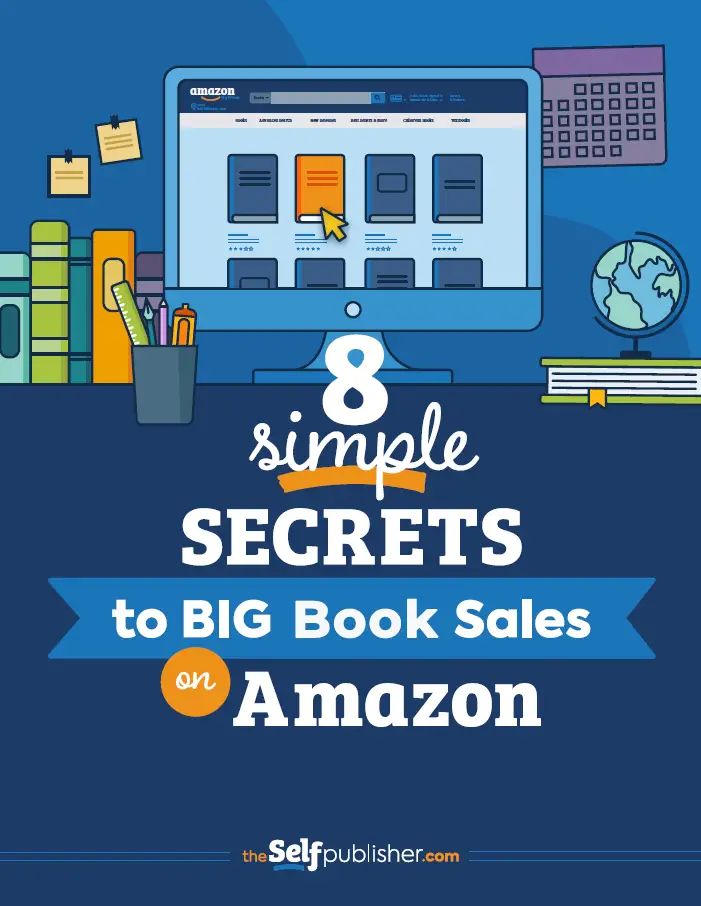The rise of self-publishing over the past decade has given authors an unprecedented amount of control over the publishing process. It also offers the prospect of impressive financial rewards: you’ve probably come across plenty of self-publishing success stories of authors earning six or seven figures from their writing.
You might feel excited about the prospect of self-publishing your work, but you may also be worried about how much it’s going to cost. After all, you want to do a professional job, but when you’re self-publishing, you need to take care of editing, cover design, formatting, and more. You might not be sure what to prioritize when budgeting for publishing your book.
We’re going to take a look at exactly what the cost of publishing a book entails (including some hidden costs that you may not have considered). We’re also going to cover what you can do if you need to publish your book on a tight budget.
What’s the Average Cost to Publish a Book?
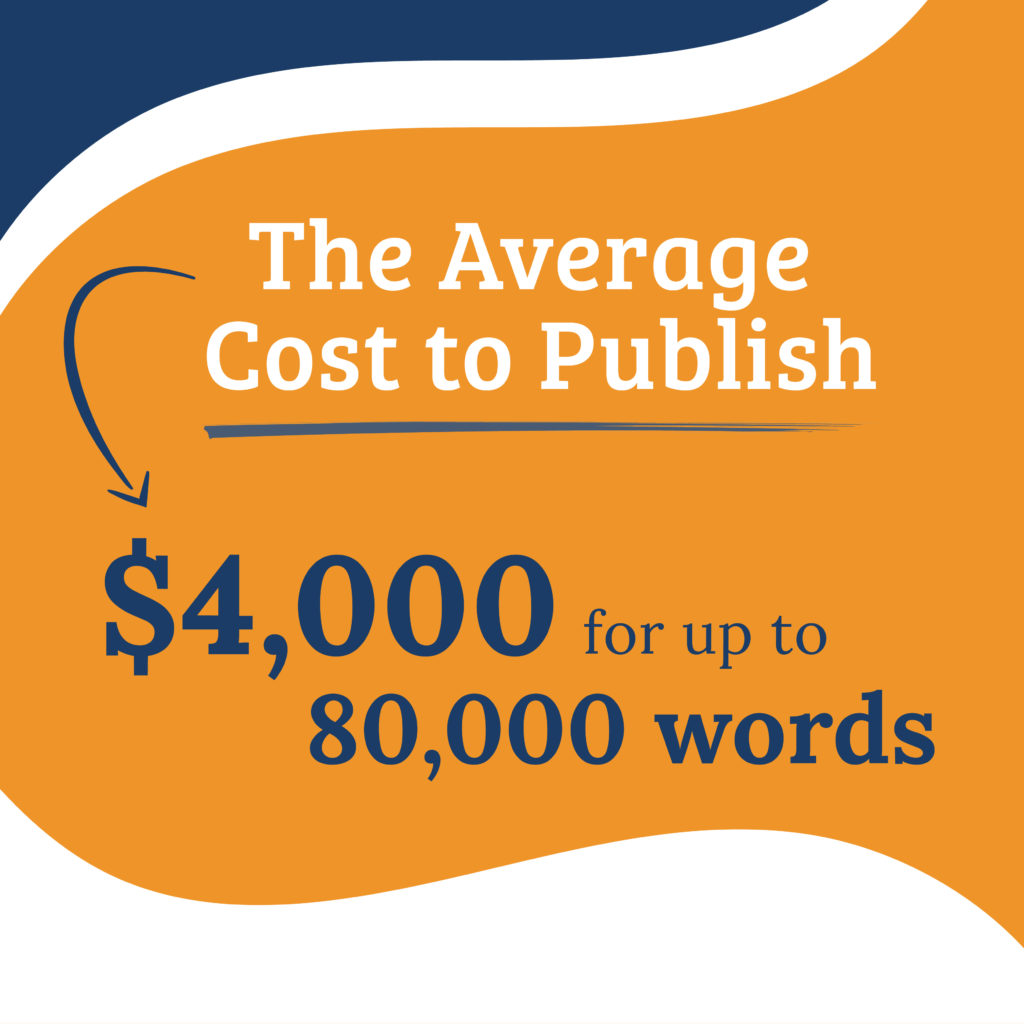
Average book publishing costs vary.
Reedsy, in partnership with Blurb, estimates it costs around $4,000 to publish an 80,000-word book—suggesting that this cost varies, depending on genre. (This cost includes developmental editing, copy editing, proofreading, cover design, and typesetting.)
Many authors spend far less, of course, because they choose not to pay for all these services. In fact, Self-Publishing School suggests authors normally spend between $100 and $2,500.
So exactly how much does it cost to self-publish a book? Let’s take a look at self-publishing costs broken down into different categories.
How Much Does it Cost to Hire an Editor?
Hiring an editor will make up a major part of the cost to publish a book. How much you pay will depend on:
- The length of your book. Editors normally charge per page (e.g. $0.09/page) so the longer your book, the higher the cost.
- What type of editing you want (developmental editing, copyediting, or both). If you want to go through two or more rounds of edits, you’ll need to pay for each. Some authors even choose to have their book edited by more than one editor.
- Whether your manuscript is fairly polished or still in a rough draft stage. The more work the editor needs to do, the more it’ll cost.
- How technical or academic your book is. If it’s dense, detailed material that takes a lot of time to get through, that’s likely to cost more.
Most likely, you’ll pay somewhere between $1,000 and $2,000 for a professional edit of your book. If you’re paying for a developmental edit and a copyedit separately, you’re probably looking at $3,000 or more.
How Much Does a Book Cover Design Cost?
If you can only afford to pay for one service on this list, pay for book cover design. It’ll make a huge difference in how professional and polished your book looks.
Cover design pricing can vary tremendously. At the low end, you can get a decent cover for around $100, but many authors spend more to get something truly impressive.
Self-Publishing school estimates, on average, book cover design costs between $300 and $600.
Reedsy puts the top end of the range even higher, suggesting $300 to $1,500—though Bibliocrunch recommends budgeting $500 to $1,200 for “covers that look like Penguin, Harper Collins, Random House, and Pearson quality.”
Whatever your budget, make sure you look carefully at the designer’s previous samples of work. Do their book covers look like something you’d see on the bookshelves in your favorite bookstore?
Also, be clear about what you’re getting from the designer. Having just an ebook cover designed will be a lot cheaper than having an ebook cover, a paperback cover, a hardback cover, and graphics for social media.
How Much Does Book Formatting Cost?

Book formatting costs can vary depending on what you need: ebook, hardback, and paperback formatting all need to be done differently.
Formatting is important because, without it, your text may not display correctly on your readers’ ebook device.
If you’re producing a print book, formatting means the pages will look right (e.g. the text won’t be running into the gutter between the pages because the margins are too small).
You could spend anything from $50 (ebook only) to $1,000 on formatting. On average, you’re looking at around $300 to $500 if you’re producing a print version, as well as an ebook version, of your book.
If your cover designer also offers book formatting, you may well find you can get a good deal by using their services for both your cover and formatting.
How Much Does it Cost to Promote a Book?
When you consider the costs of publishing your book, you might just be focusing on how much it will cost to produce the ebook (and/or print version) so that people can buy it.
But most authors also spend money promoting their book. Marketing costs can add up fast and vary tremendously.
You might be spending money on:
- Promotional tools, such as KDSPY, which helps you target the most profitable genre categories on Amazon.
- Facebook, Google, or Amazon ads (and potentially on courses to help you understand and use these).
- Hiring a book marketing professional to help promote your book.
- Paying to have your book listed on book review blogs or in email newsletters.
Promotional costs vary, though many authors don’t spend much in this area. Reedsy found that most authors they surveyed spent between $50 and $200.
While, in general, the money you spend on promotion should be more than recouped in book sales, you do need to think carefully about whether particular services are worth it.
For instance, it can cost over $1,000 to send a press release—and you may find this doesn’t result in many (if any) additional book sales.
Perhaps it seems a bit premature to start thinking about marketing before your book is published. But it’s a good idea to create a book marketing plan before you go through the publication process.
Your marketing plan will likely affect things like your cover design and even the title of your book, so make sure you’re planning ahead.
How Much Does Book Printing Cost?
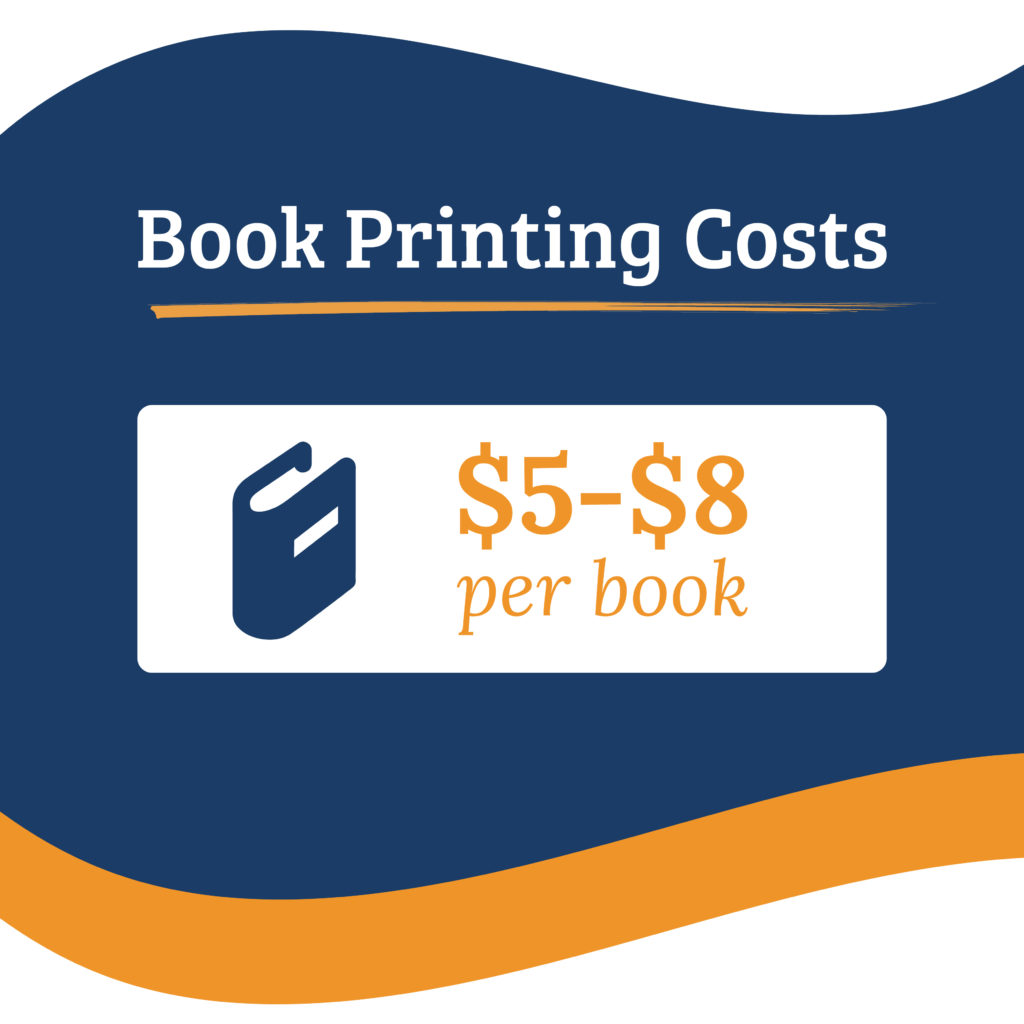
Some self-publishers just produce ebook versions of their books, but others like to have print copies available as well.
For most authors, the easiest way to do this is to use print-on-demand (POD) services so that books are only printed once they’re purchased. That way, you won’t end up with boxes of expensive unsold inventory.
Using Amazon’s KDP print-on-demand service, a 300-page paperback with no color pages would cost $4.45. However, you can’t sell your paperback for $5 and make a $0.55 profit.
So how much do authors make per book?
Amazon only gives you 60% royalties—which has to cover the cost of printing the book—so there’s a “minimum list price” of $7.42 for a 300-page paperback.
At this price, you wouldn’t make any profit. You’d likely want to set your price as at least $9, and even that would only net you a profit of $0.95 per book.
Another option is to pay a printing service to produce 500, 1000, or more copies of your book. The price should be around $4 – $5 for a 300-page book (if you’re printing at least 1,000 copies).
Then, anything you make on the book sales is profit. The drawback is that you’ll be spending $4,000 – $5,000 up front to have your books printed, and you’ll have to handle (and pay for) storage and distribution.
What Are Some Other Hidden Book Publishing Costs
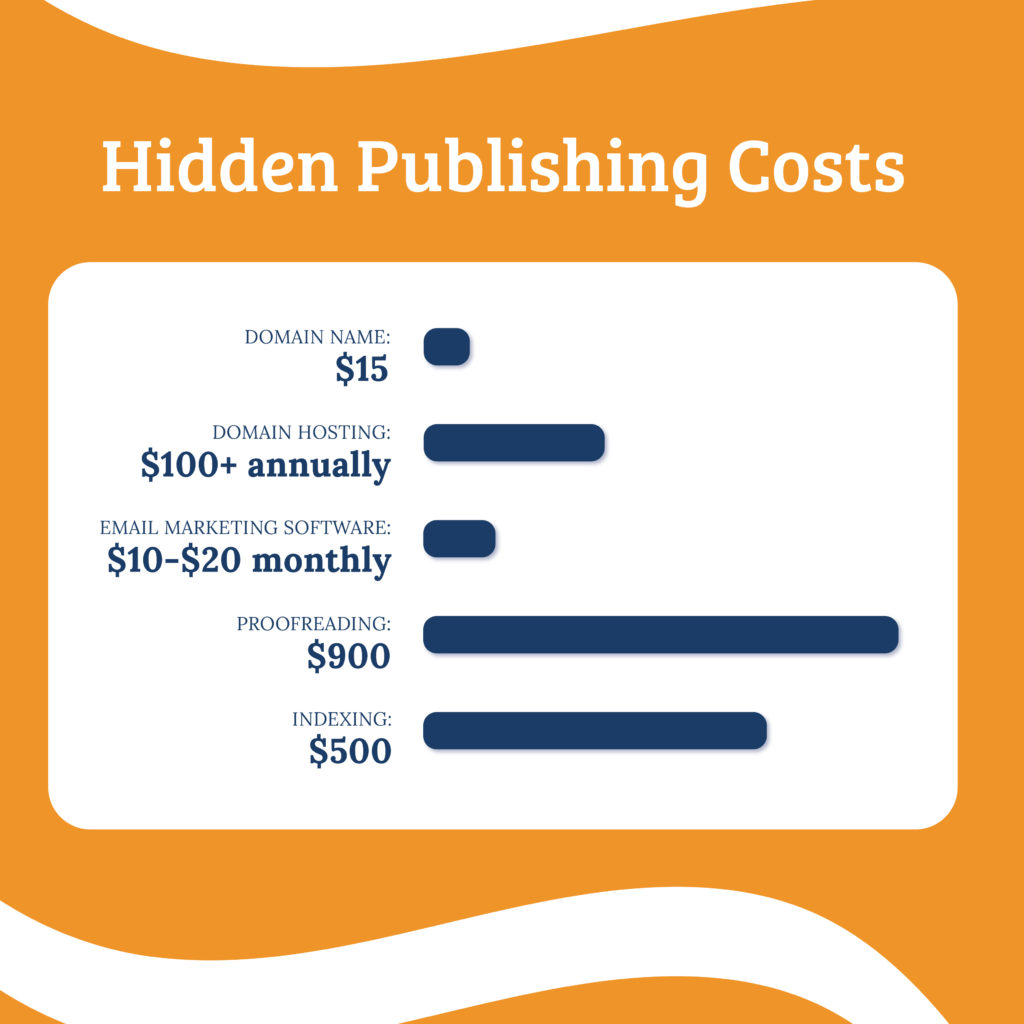
The above costs are what most self-publishers can expect, but there are additional costs you might need to account for, too. It’s a good idea to think about these up front, so you can figure out where your money can best be spent.
Your hidden book publishing costs may include:
- Your author website and mailing list
- Audiobook production costs
- Proofreading costs
- Specialist costs, such as indexing
Your Author Website and Mailing List
Most self-published authors have an author website. This can be a great way to drive book sales.
While it’s possible to build a website for free, you’re likely going to want to spend some money—even if it’s just $15 for your own domain name (e.g. yourauthorname.com).
Many authors will also pay for hosting, and potentially for website software, which can cost as much as $100/year or more.
If you want to create a website for free, there are plenty of services like WordPress.com that offer a free plan. This can be a good short-term solution or even a way to practice setting up a website if you’re feeling a bit overwhelmed.
It’s also possible to create a mailing list for free using some services, but many authors choose to pay for extra features, which can cost an additional $10 to $20 per month.
Audiobook Production Costs
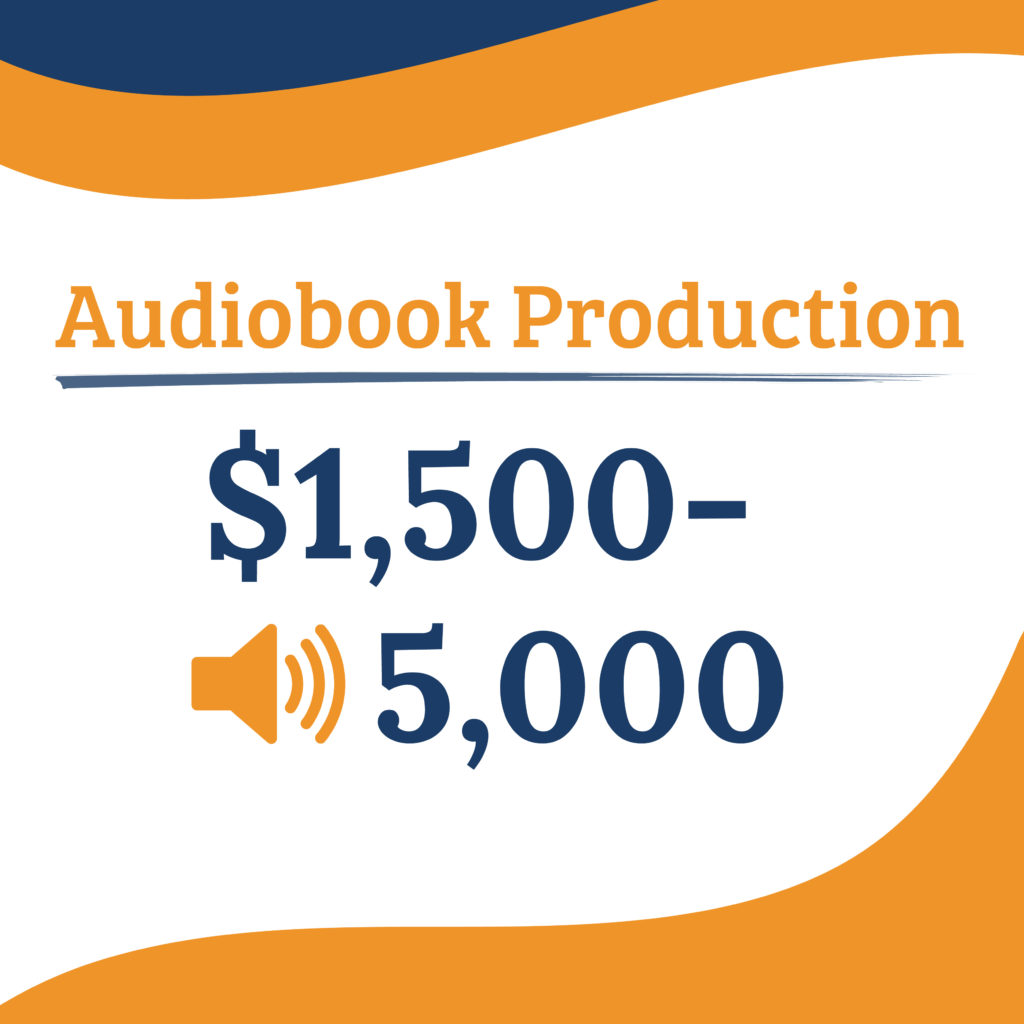
If you’re publishing an audiobook along with your ebook and/or paperback, then that costs money too. Depending on the cost per finished hour of audio, you can expect to pay around $1,500 to $5,000 to get an 80,000-word book recorded.
You may not necessarily need to pay all the costs upfront: some audiobook creation services have a royalty share program where you instead pay some or all of the costs through a percentage of royalties.
Keep in mind that, if your audiobook sells well, a royalty split could end up costing you far more in the long run.
Some authors choose to narrate their own audiobook. This can work okay for non-fiction books (particularly if readers are used to hearing your voice on a podcast), but with fiction, it’s best to hire a professional narrator.
They’ll likely have a much better audio setup than you do, and they’ll know how to carry out post-production so that the whole book sounds consistent.
Proofreading Costs
It’s easy to forget about proofreading, but authors often regret ignoring this area. Even if your book has been through a couple rounds of editing by a professional editor, you should still budget for a final proofread.
It’s easy to make mistakes as you edit, and you don’t want readers’ first impression of your book to be marred by a glaring typo.
Proofreading is a little cheaper than editing, averaging around $900 for an 80,000-word book.
Specialist Book Publishing Costs (e.g. Indexing)
Some types of books will also require extra services or costs that you might not have thought of.
For instance, if you’ve written a detailed non-fiction book, you might want to pay for the services of a professional indexer. Normally, you’ll be looking at around $500 for this service—but the cost will increase for academic or technical books.
You might also need to pay for other things that are specific to your book, such as:
- Custom illustrations or graphics
- A fee for copyrighted material you want to quote in your book
Make sure you think about these when setting your budget, rather than leaving them as an afterthought.
Why Watch Out for Vanity Publishing Services
While there are lots of services you can pay for that help you self-publish a book, not all of these are good value.
Good self-publishing services exist to help you sell books to readers. They’re realistic and honest with you. They won’t make vague or wild promises.
The Alliance of Independent Authors defines vanity publishers like this:
“ALLi’s definition of a vanity press is a publishing service that engages in misleading or, in the worst cases, outright deceptive practices, with the intention not of bringing books to readers but of extracting as much money as possible from the authors.”
As an author, it’s usually best to pay for services like cover design and editing separately from one another. Any big company offering a “comprehensive” package (and trying to upsell you on as many services as possible) is likely to represent poor value for money.
How to Publish a Book on a Budget
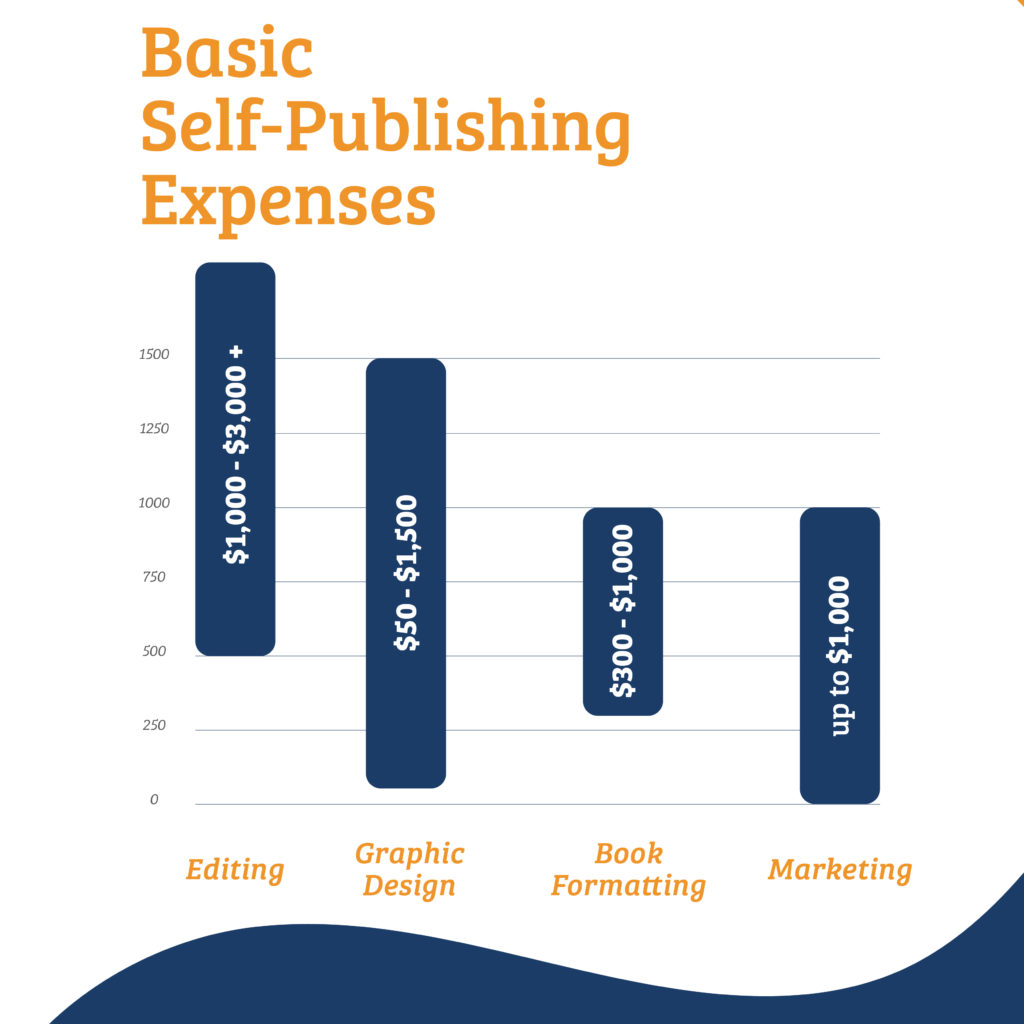
What if you’re on a tight budget? Maybe you can’t afford to spend thousands, or even hundreds, on publishing your book.
Many first-time authors are in this position. It’s definitely possible to get your book published without spending a fortune.
Here are some ways to reduce your costs:
Editing Your Book on a Budget
Editing is one of the biggest costs—often the biggest cost—self-publishers face.
If you can’t afford to get your whole book edited, here are some good free or cheap alternatives:
- Using beta-readers (free). These are keen readers, rather than professional editors, who’ll read your manuscript and offer feedback. You might find them through online groups or forums.
- Swapping manuscripts with fellow writers (free). If you belong to a writing circle or workshop group, you might be able to swap feedback with someone else. This can be a lot of work (you’ll need to invest hours of your time in reading their manuscript) and it won’t offer the same level of feedback as paid editing, but it can still be very helpful.
- Paying for an edit of your first 1 – 3 chapters (around $200 – $600). Many editors will be happy to edit a short part of your work, instead of taking on the full thing. This will come at a fraction of the cost—and you’ll hopefully find that you can use some of the feedback to improve the rest of your manuscript.
- Spending more time on self-editing (free). If you don’t have an editor, you need to make sure you get your manuscript into the best possible shape on your own. At the copyediting stage, that might mean reading it aloud or editing on paper so that you can more easily spot mistakes and stylistic glitches.
- Use free or paid for editing tools (free, up to $25/month). There are lots of great online editing tools, like Grammarly and ProWriting Aid. These can help you spot typos, fix clunky sentences, and hone in on overused words. They’re not a full replacement for a human being editing your work, but they can certainly help.
Keep in mind that none of these options will be as comprehensive as a professional edit. However, using any of them will definitely be better than simply publishing an early, unedited draft of your work.
When it comes to proofreading, you’ll want to spend time very carefully proofing your own book. Ideally, you’ll also want to ask willing friends and family members to help.
They won’t have the same skills and eye for detail as a professional proofreader, but they may well be able to spot some mistakes. If possible, divide up your book between several people so that each individual only has to proofread a few chapters.
Cover Design on a Budget
What if you need a cover done cheaply?
One option, if you have a good eye for design and ideally some graphic design training, is to create the cover yourself.
This can be risky: your book cover is the first thing readers see, so you don’t want it to look amateurish. Even a great-looking cover could work against you if it doesn’t fit well with genre expectations.
When designing the cover yourself, consider:
- Using a pre-designed template. Canva has a number of these. They can make a good basis for your cover, though you’ll likely end up tweaking them a lot to suit your book.
- Paying for quality stock photography from a site like Shutterstock. Unless you’re a genuinely good photographer, don’t try to use a snapshot you took yourself.
- Sticking to just two different fonts: more than that is likely to look cluttered and amateur.
- Looking at the types of colors and images that are commonly used in your genre, so you can do something similar with your cover.
If you can afford it, you can get a professionally designed cover for as little as $99. These pre-designed covers from The Book Designer are great options: once you purchase a cover, no one else can use it, so it’s unique to your book.
Another good place to look for cheap covers is Fiverr. Their book cover design category has lots of cheap designers: you can see examples and reviews of their work before hiring them. You may want to choose a designer who specializes in your genre.
Make sure that your designer will supply your cover in the formats you need: you’ll likely want a .jpg version of your cover for the ebook, but you might need to upload a .pdf for the paperback cover.
Formatting Your Book on a Budget
If you have a straightforward book without pictures or illustrations, you might be happy to do the formatting yourself—particularly if you’re only publishing in ebook format.
With Amazon, you can upload your manuscript and preview how it’ll look on different devices. This lets you easily spot and fix formatting issues.
Formatting an ebook can take longer than you might expect, so remember the value of your own time. Instead of spending a day painstakingly fixing minor formatting details, you might prefer to spend $50 to $100, and let someone else do it for you.
If you’re producing a print book, formatting is a little more involved. You’ll likely want to order sample copies of your book (the cost of this can add up, too) to make sure you’re happy with how it looks.
There are a number of free tools you can use to format your book, too: Joanna Penn has a list of these, along with some general tips on formatting and hiring someone to format your book.
Promoting Your Book on a Budget
For some authors, the cost of promoting a book quickly outweighs the cost of actually publishing it.
Promotion can get expensive, especially if you’re paying for marketing services. The good news is, there’s a lot you can do at no cost.
You might:
- Get active on social media (e.g. creating a page for your books on Facebook).
- Spend time submitting your book to review sites—though keep in mind that free sites often have a long list of books to work through.
- Run free promotions (e.g. as part of Amazon’s KDP select program).
- Give away copies of your book to get it in front of more people.
- Ask readers to review your book.
- Write guest posts for other people’s blogs and websites.
- Let podcast hosts know that you’re available for interviews.
… and more. None of these things cost money, though you may need to carefully consider how best to budget your time.
You can also run ads on quite a small budget ($5/day or even less) if you’re interested in experimenting with paid advertising.
Check out this list for more marketing ideas plus tips on getting the most out of the above suggestions.
Printing Your Book on a Budget
If you’re on a budget, it definitely makes sense to opt for print on demand. This doesn’t cost you anything up front: the printing service costs are paid for each time someone purchases a book.
Many authors use Amazon KDP to produce the print version of their book, though there are plenty of other options.
If you find that there’s a large demand for print copies of your book, you can potentially produce a print run (of 500, 1,000, or more books) at a later stage. That way, you’ll make more profit per book sold.
Why Publishing Your Book Doesn’t Need to Cost a Fortune
Remember, as a self-publisher, you’re in control.
If you have $200 to spend on publishing your book, that’s okay. You can figure out how best to use that money for the best possible impact.
For instance, you might spend $100 on cover design, $50 on ebook formatting, $25 on a month-long Grammarly subscription, and $25 to set up a basic website.
As you start to sell books and recoup your costs, you can invest additional funds in things like a better cover design or more marketing services.
Getting your book out there into the world is a huge step … but it’s not the end of the journey. Once your book launch is over, you’ll want to continue your marketing efforts to make sure your book keeps selling.
Plus, you’ll want to write (and publish) more books. Spend some time noting the various tasks you needed to accomplish to publish your first book, and you’ll have the start of a solid publishing timeline for your next book.
Don’t let the cost of publishing a book put you off. Figure out what you can afford and what you can do yourself, and focus on getting your book out there onto the virtual shelves.



